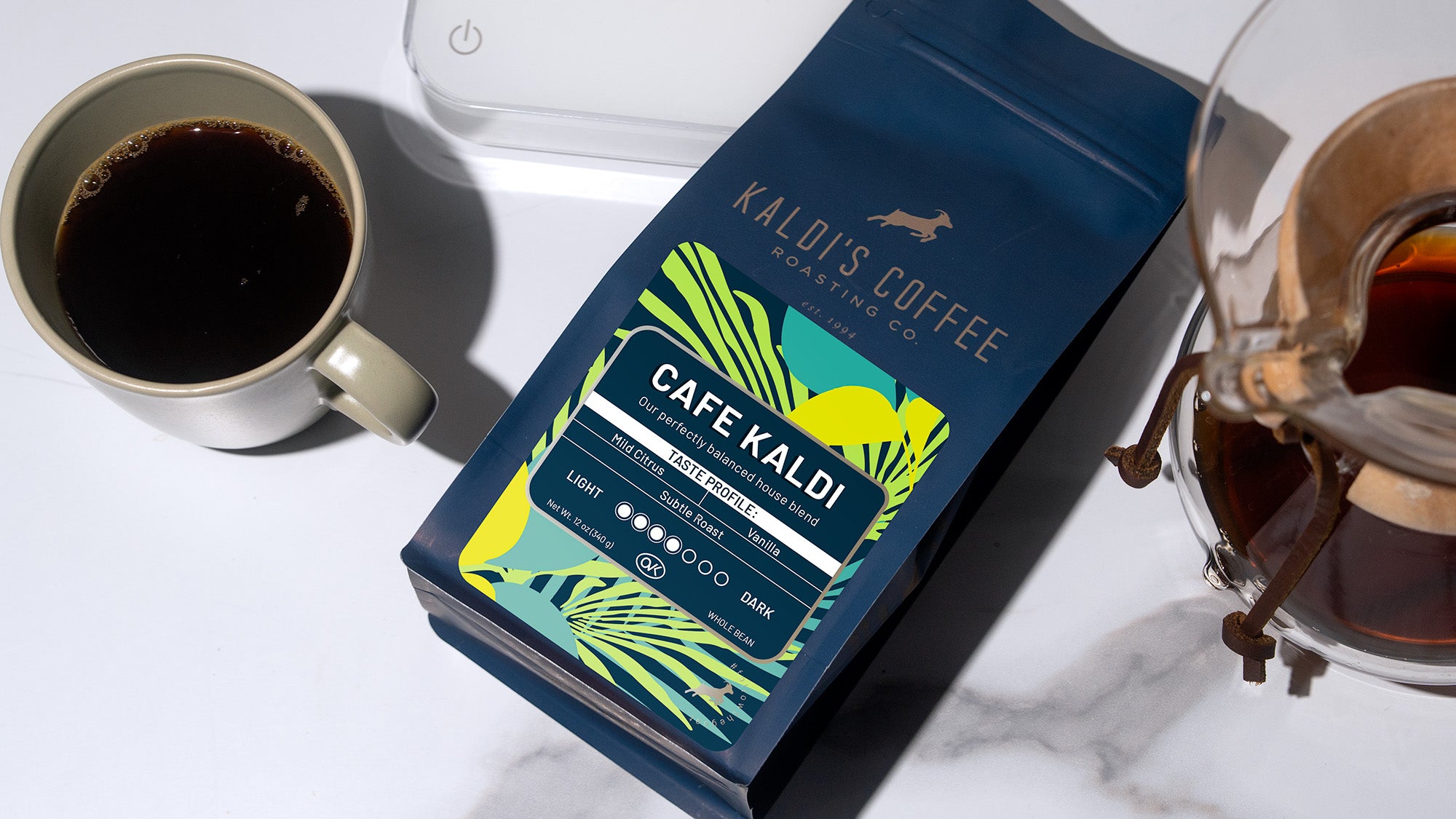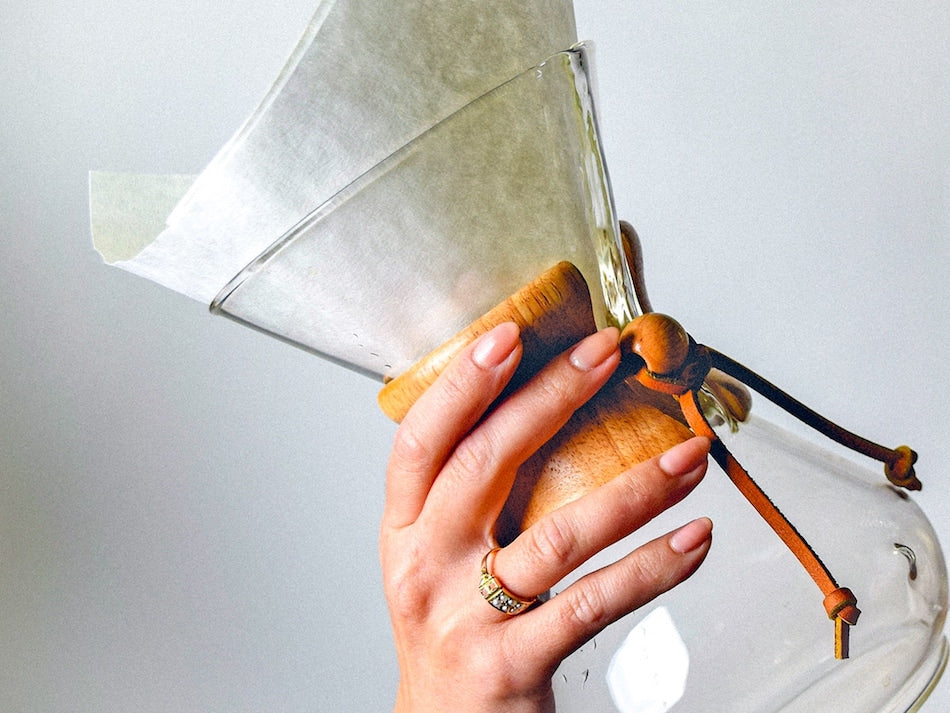Updated: 6/21/2022
The summer time is usually synonymous with cold brew coffee, but for many cold brew is a year-round drink. So, you'll want a brewer that's up to the task: easy to use, easy to clean, and makes great coffee.
We had fun experimenting with several at-home cold brew makers and are here to present some of our findings and results:
- Hario Wine Bottle
- Kinto Capsule
- Toddy
- Hario Mizudashi
|
Just want the scoop on what we liked best and how to get the most out of it? Skip down to our section:
|

From left to right: Toddy 7 Cup, Kinto Capsule, Hario Wine Bottle, Hario Mizudashi
In this blog, we'll walk you through that journey a little bit and hopefully answer some of your own questions along the way.
First, we cold brewed our medium-roasted, tried-and-true Haya Cold Brew Blend with each brewer (almost) exactly according to the manufacturer’s instructions––then, we went off-book and started tinkering while we hunted for what we thought was the best final product.
Read on to learn more on getting the best cold brew you can out of each of these kits, and why!
OUR PROCESS: HOW WE BREWED & WHAT WE USED
Round 1: Directions from the box
We entered Round 1 with these brewers by simply following the out-of-the-box manufacturer instructions (see round 1 card here), except for one caveat: we used our preferred, medium-light-roasted cold brew blend, Haya.
This round resulted in a great brew from the Toddy, but we weren’t quite getting what we usually look for in a cold brew from the other 3 brewers. Not enough body, too little sweetness, and some hallmarks of under-extraction. So, we tried a couple different variations.

Round 2: Initial Tweaks
In Round 2, we left the Toddy behind - it was already good! - and tried the following four adjustments to get a cold brew that was more to our liking:
- coarsened up the grinds
- changed the coffee/water ratio to be a little closer for each brewer (we added more coffee to the same amount of water, basically)
- extended brewing time to 12 hours (from 8)
- used ambient (room) temperature instead of putting them into the refrigerator
The goal was to coax out a little more sweetness and body than we were getting initially from our blend. Along the way we also opted to repeat our Round 1 brews with these 3 brewers, but replaced the Haya with our most developed blend, Cafe Malta.
Both the Kinto and the Mizudashi instructions recommended using dark-roasted coffee, a note we’d originally ignored, but we decided to see if it would improve the brews that hadn’t quite done it for us. (See Round 2 card here)

We used Cafe Malta, our most developed blend, and Haya Cold Brew for the tests
Round 3: Dialing them in
We entered Round 3 somewhat more pleased with what we were getting, but still missing the richer, more nuanced cold brew that we prefer. So we kept all the variables the same except for the brew time, pushing the Mizudashi to 18 hours and to 16 hours on the Wine Bottle and the Kinto (See Round 3 card here). This finally made us happier with all 3 brewers, but also more confident about which one we liked best (apart from the classic Toddy, of course).
Read on to see the results and get our final recipe!
DIFFERENT BREWS FOR DIFFERENT CREWS
One of the biggest challenges in this hands-on experimental product review, besides the time and the cleanup, was realizing and unlearning our own cold brew biases!
At Kaldi’s Coffee, when we say “cold brew” we usually mean a dark, mellow beverage with hints of light fruit (think apple, citrus, stonefruit) and smooth, silky chocolate nuances. Our ideal cold brew has a lighter, approachable body and mouthfeel, mild acidity, and quenches a summer thirst while still remaining sessionable. (Read 5 Things You Should Know About Cold Brew)
However, this view of cold brew may not be everyone’s thing. Our take on cold brew isn’t the only one around, and the different kits made us rethink how people might like different brews.
By opening ourselves up to the possibilities of 3 different brewers and a range of brewing times, we learned to let go of our preconceptions and be open to new ideas.
Exhibit A, our delicious cold brew blend Haya (a light to medium roast) doesn’t really shine in shorter brews. Haya wants to steep for longer to extract the best range of flavors.

A grid showing the roast levels of our blends
On the other hand, a dark roasted coffee like our Cafe Malta, which we’d never tried as cold brew before, got a chance to stand out with the shorter cold brew times. The Cafe Malta contributed sweetness and body to what we had only been getting thin or even astringent notes from when we’d used Haya.

WHAT WE LIKED! & WHAT WE DIDN’T LIKE AS MUCH
Likes:
- The Hario Wine Bottle: for its forgiving rubber lid/spigot that's not only klutz-friendly but also makes a pretty decent airtight seal.
- The Mizudashi: for its handle, its volume markings, and its open-top filter design. This last one particularly made it a joy to brew with, letting us stir and pour more deliberately.
- The Toddy: for its strong, reliable brew and open design.
 We really like the handle that's included on the Hario Mizudashi
We really like the handle that's included on the Hario Mizudashi
Did not like as much / could pose issues for some:
- The Kinto or the Hario Wine Bottle: for their locked-in filter design. This makes it hard to tinker with the brew or stir at all.
- The Toddy has “go big or go home” approach that can be overkill if all you want is a couple of cups. Plus it’s quite a mess to clean up!
Cafe Malta vs Haya Cold Brew Blend:
- We liked the Hario, Kinto, and Mizudashi most with our Cafe Malta, but the 16 hour Haya brews on the Hario Mizudashi were also tasty, though slightly less full-bodied than we’d hoped for.
SO WHAT IS THE BEST COLD BREW COFFEE MAKER?
Ultimately, deciding what cold brew maker to use depends on what your goals are. We have some suggestions below, but cold brewing––and brewing coffee, in general––should be a personal journey of taste and discovery.
All that being said, we did our best to be as useful as possible and give our final suggestion!
First: The best brewer for you based on your usage and preferences
Make A LOT of coffee that's very strong and will last for days and days:
- Winner: Toddy, brewing for 18-20 hours
Make mild & light cold brew, ready to drink, 2 to 4 cups, prep it before going to bed
- Winner: Hario Mizudashi or Hario Wine Bottle, brewing for 8 to 12 hours
Make mellow and smooth cold brew, ready to drink, prep it when you get home from work
- Winner: Hario Mizudashi, then the Hario Wine Bottle, then the Kinto Capsule (from our favorite to least), brewing for 14-18 hours

|
Note: If you like dark roast coffees, we suggest dialing back the brew time by an hour or two on the 16-20 hour brewing range. You can probably also get away with brewing in the fridge instead of on the countertop. Our Cafe Malta brewed wonderfully in the final rounds of our experiment, particularly in both Hario models, but especially the Mizudashi, and can probably be more forgiving of a shorter brew time or colder temperatures. Our Haya blend, and other light to medium roasts, benefit greatly from longer, ambient temp brewing, unless you like lighter, slightly more tea-like brews with less sweetness and body (you do you, brewfriend). |
🏆 The All-Around Best Cold Brewer: The Hario Mizudashi
The Hario Mizudashi was our favorite of the 3 “filter-in-bottle”designs we tested.
We particularly like a 100 grams coffee / 1200mL water brew, using a medium to dark roast coffee (or a blend of two roasts, hmm), at ambient temp for 18 hours. Ultimately this brewer gave very balanced and sweet notes to our cold brew and made a very nice amount of coffee, perfect for a few days of convenient drinking.
| See the final recipe and notes on our Hario Mizudashi Cold Brew Recipe Page. |
We also appreciate the sophisticated look of the the Hario Mizudashi, but that’s just subjective taste. The carafe design is actually, you know––a carafe. It’s also the only one with a handle! Very, very exciting. Also, unlike the other 2 kits, this brewer’s filter basket free-stands on the rim of the carafe, and does not need to be vertically locked to the spout/lid before brewing. This enables freer customization of your brew setup when pouring––perhaps when trying a little hot bloom or flash brew? (We’re excited to test this out soon and tell you all about it!)
Another feature we liked about the Hario Mizudashi was the removable bottom on the filter basket––this made cleanup even easier than the other filter-in-bottle models.
We hope our little experiment was useful to you, and invite you to experiment in the world of cold brew yourself. Hit us up on Instagram and Facebook with your cold brew questions, or tell us about your own brewing setup and technique modifications!
BEFORE WE GO - ONE MORE QUESTION...
Do you even need one of these brewers to make delicious cold brew coffee?
Read our blog, "How to Make Cold Brew with a French Press" to find out!
Note:
The manufacturer is no longer shipping the Mizudashi.
-
READ NEXT:
- Kinto Capsule Cold Brewer Recipe
- Cold Brew: 5 Tips for Better Brewing at Home | Kaldi's Coffee Blog
- Cold Brew Taste Test: 5 Coffees, Hot vs. Cold | Kaldi's Coffee Blog










